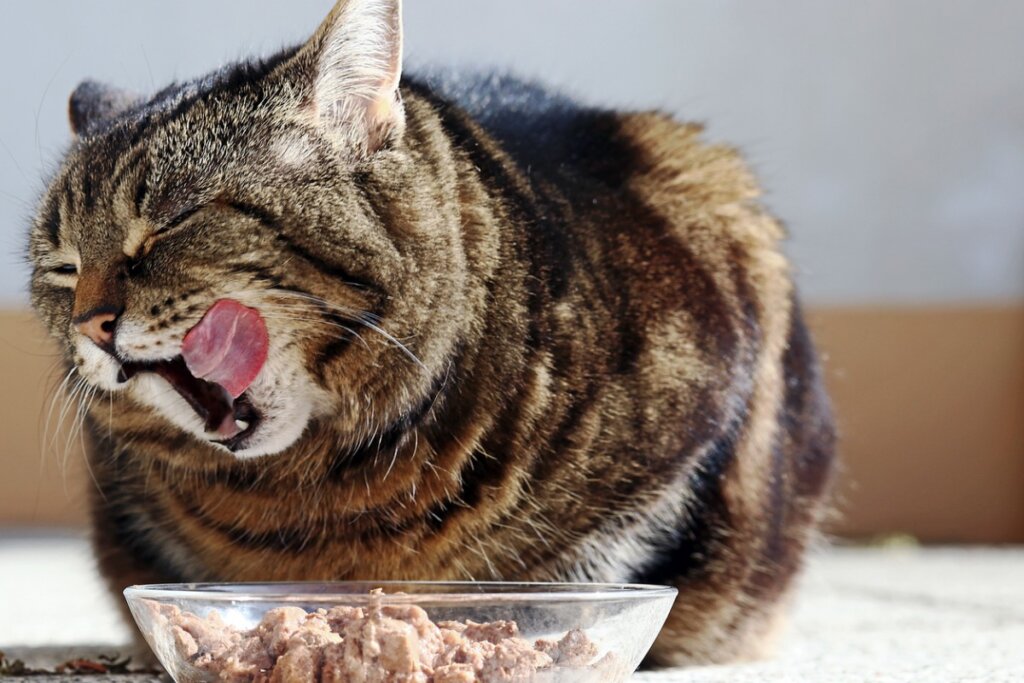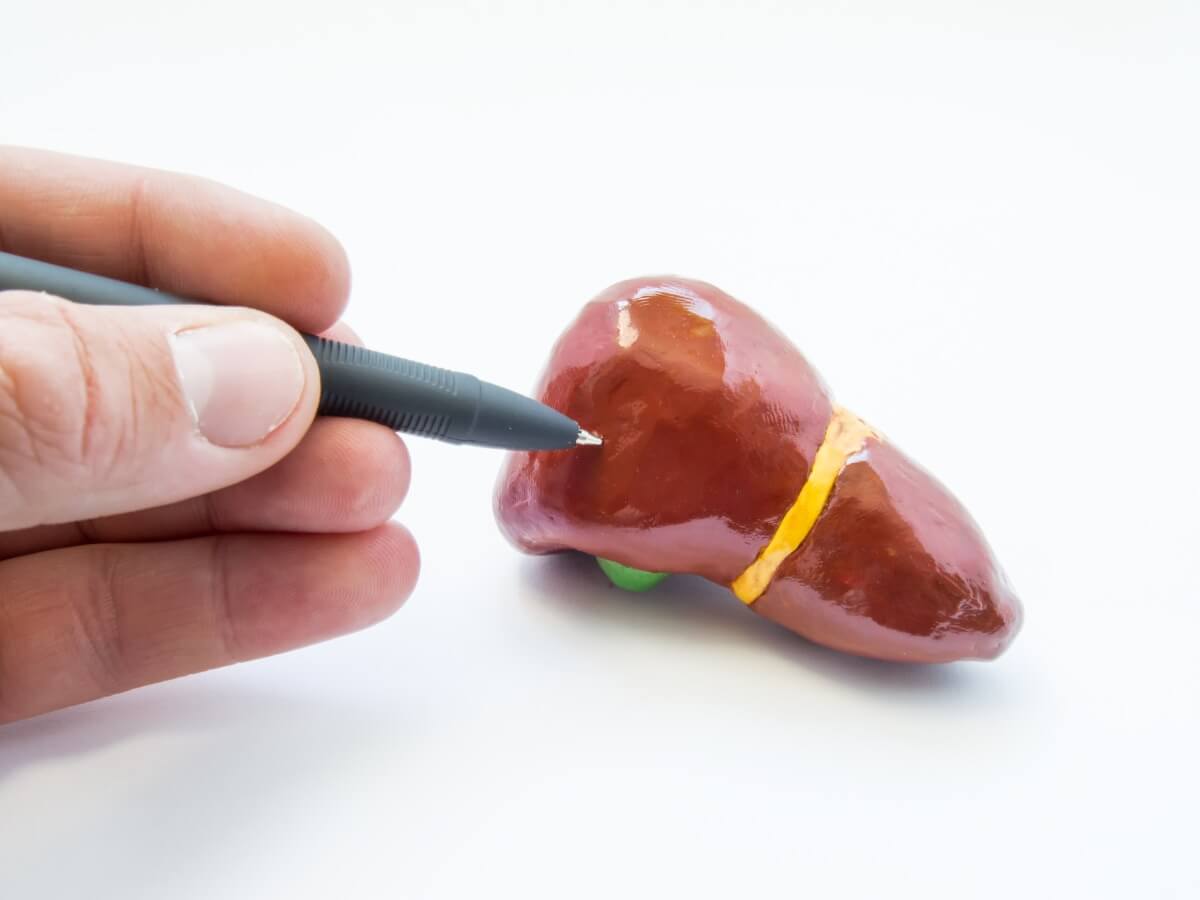Food for Cats with Hepatitis
Dietary recommendations for hepatitis should be made on an individual basis, as it changes depending on the pathology that has caused the inflammation in the cat.

The liver is an important organ in all pets, as it fulfills functions such as detoxifying and absorbing nutrients. For this reason, any disease that impedes its work can bring fatal consequences. Among the most common pathologies is hepatitis, which is an inflammation of the liver that can endanger a cat’s life. Find out how to feed cats with hepatitis in today’s article.
Usually, the warning signs of liver problems are only visible when the conditions are severe. This means that the liver can’t perform its normal functions. One way to prevent this organ from deteriorating further is to change your cat’s diet to reduce the demands on their digestion. Read on to find out how to feed cats with hepatitis.
How does the liver work in cats?
The liver is one of the most important organs in a cat’s body, as it’s involved in several metabolic processes. When such an essential structure is damaged, pets begin to show serious clinical signs that must be addressed promptly. Among the functions performed by this organ are the following:
- Digestive functions: It’s responsible for absorbing vitamins and fats during the digestive process.
- Detoxification and excretion: It eliminates drugs and toxins that can affect the body.
- Storage functions: It also serves as a type of reservoir that stores fats, vitamins, and some minerals.
- Metabolism (proteins, sugars, fats, vitamins, and hormones): It synthesizes and breaks down proteins, sugars, fats, and vitamins to regulate overall metabolism. It also modulates the amount of hormones that travel through the blood.
The moment the liver is affected by any pathology, its functions are reduced or completely inhibited. Being unable to absorb nutrients or detoxify the body, the body can’t maintain the stability of its metabolism and deteriorates.

What are the causes of hepatitis in cats?
Hepatitis can be caused by several different factors. It’s usually associated with pre-existing diseases that lead to inflammation of the liver. Some of the causes of this problem are the following:
- Infections in the liver: By bacteria, viruses, or protozoa.
- Pancreatitis: Inflammation of the pancreas.
- Chronic inflammatory bowel disease: This pathology encompasses a series of dysfunctionalities of the digestive system that also impact the liver.
- Autoimmune problems: Antibodies directly attack the liver and bile ducts, causing inflammation.
- Peritonitis: A general infection of the peritoneum that can affect other organs.
- Hepatic lipidosis: The accumulation of fat in the feline liver.
- Toxins and drugs: Administration of diazepam, tetracyclines, paracetamol, stanozolol, or methimazole without veterinary supervision can cause liver failure.
- Neoplasms: Abnormal masses in the liver that cause inflammation.
Why should I be careful with the food of my cat with hepatitis?
Inflammation prevents the liver to carry out the absorption of certain nutrients. Therefore, foods that are more difficult to digest will cause the organ to be pushed to the limit, which will further damage its integrity. Because of this, it’s recommended to provide adequate food to facilitate the treatment and recovery of cats with hepatitis.
What can I feed my cat with hepatitis?
Most liver diseases affect the pet’s appetite. This causes the feline to shy away from food or refuse to accept it. Despite this, it isn’t recommended to force the cat to eat, because it could cause a further refusal of food. If it still doesn’t eat, the best option is to take it to the vet to receive food through a feeding tube.
It’s important to note that hepatitis usually causes malnutrition, so you shouldn’t let the cat stay without food for more than a day. If you have any questions, see your veterinarian immediately to avoid causing even more serious complications for your pet.
In general, the diet of cats with hepatitis should contain 30-50% “good” fats (monounsaturated and polyunsaturated) in conjunction with 35% carbohydrates. In addition, vitamin, mineral, and fiber supplements should be added to supplement the diet. Unfortunately, it’s very difficult to formulate a homemade menu that meets all of these requirements.
Commercial diets
Fortunately, there are commercial diets that are designed to provide all of the nutrients that cats with hepatitis require. The benefit of these formulated feeds is that nothing else needs to be added to the food. They ensure that your pet gets everything they need to make a full recovery.
Remember to consult a veterinarian about the best options available to you. Also, before modifying your pet’s diet or buying new food, discuss with the animal health professional if this is advisable. Don’t forget that your cat will be weak, and you should be extra careful to prevent any complications.

As you’ve seen, the feeding of cats with hepatitis is aimed at facilitating their digestion. Thanks to this, the liver will remain stable and will be able to continue recovering from the pathology. Keep in mind that each case may be different, so don’t forget to consult with your veterinarian regarding any questions or changes in your cat’s diet.

